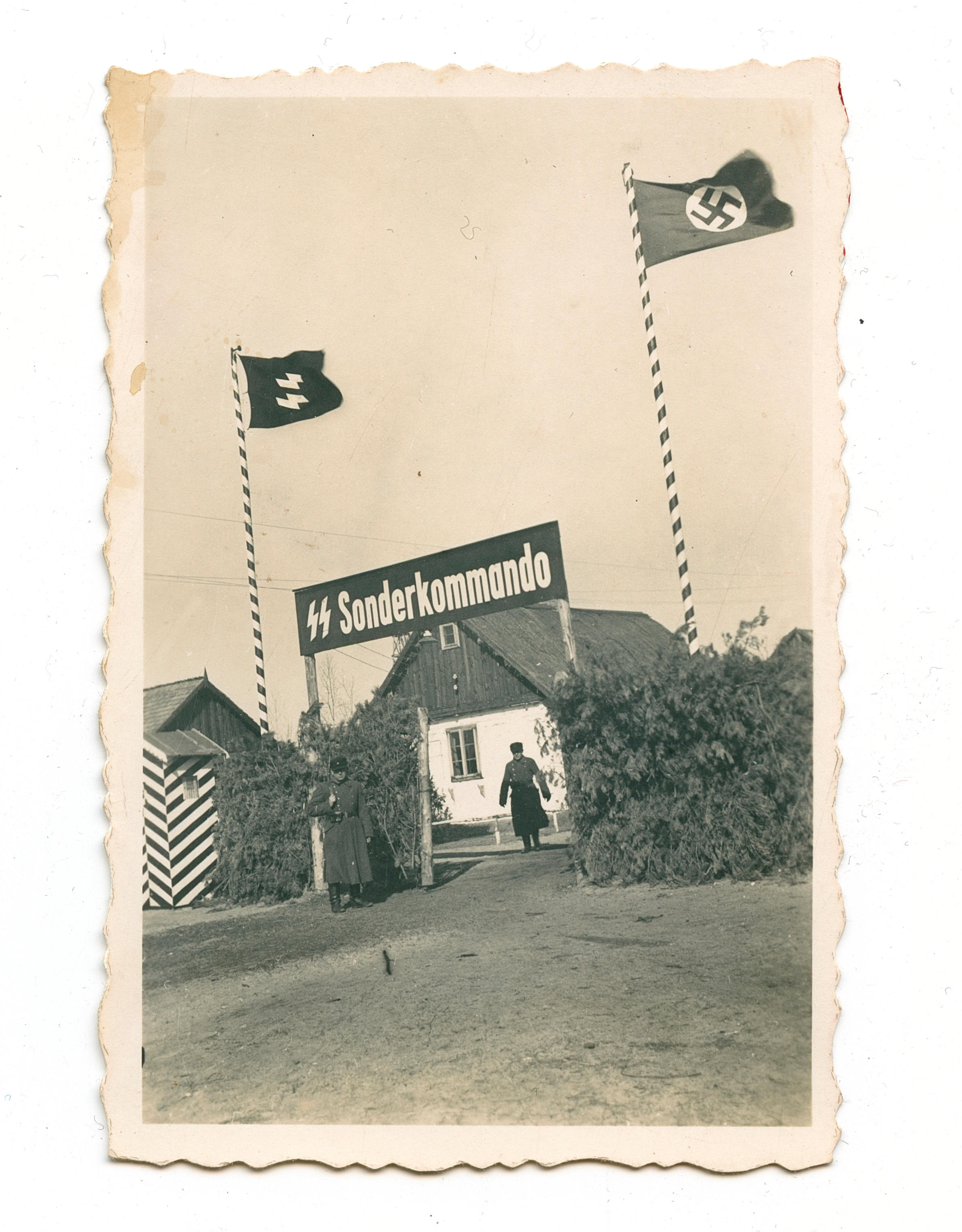Leyland Cecco in Toronto,The Guardian•January 28, 2020

Photograph: Canadian Press/REX/Shutterstock
When Toronto resident Terri Chu tweeted that she and other Chinese mothers feared the “inevitable wave of racism” that would accompany the spread of coronavirus around the world, she didn’t realize how visceral the reactions would be.
“My Twitter has just exploded with vitriol since this morning,” she said on Tuesday. “But it’s just par for the course, growing up as a minority when you’re not part of a dominant class.”
Related: What is the coronavirus and how worried should we be?
Canada has so far seen three confirmed cases of the virus, which originated in China, but members of the country’s Chinese community have already become the target of racism.
The country saw a similar wave of xenophobia during 2003 Sars outbreak, which also started in China.
During that panic, many Chinese-run businesses in Canada took steep losses as fear overrode public health advice: Toronto lost an estimated C$1bn as residents and tourists avoided the city, especially areas with a high concentration of Chinese businesses.
The irrational public worry that paralyzed much of the city seems to be returning, said Amy Go, the interim president of the Chinese Canadian National Council for Social Justice.
“I was hopeful it wasn’t going to be like 2003. But it’s is. It’s happening now and it’s just going to be amplified [by social media].”
When a popular Toronto blog, reviewed a new Chinese restaurant on Instagram on Monday, the post quickly received a torrent of racist comments.
And nearly 9,000 parents in the York school district – an area north of Toronto – signed a petition demanding students who had traveled to China in the last 17 days be prevented from attending school.
“This has to stop. Stop eating wild animals and then infecting everyone around you,” wrote one petition signer. “Stop the spread and quarantine yourselves or go back.”
On Monday, the board – which represents 208 schools – condemned the petition amid fears students will be targeted based on their ethnicity.
“We are aware of an escalated level of concern and anxiety among families of Chinese heritage,” wrote York board chair Juanita Nathan and education director Louise Sirisko. “Individuals who make assumptions, even with positive intentions of safety, about the risk of others, request or demand quarantine can be seen as demonstrating bias and racism.”
Chu said fears about the coronavirus were disproportionate.
“Air pollution and the proliferation of STDs are far greater public health risk to my kids than the coronavirus right now – it’s being completely blown out of proportion,” she said. The total death toll of Sars in Canada was 44, she said. “Last year in Toronto, 41 people got hit by cars.”
Related: Boarding schools with Chinese pupils urged to be alert for xenophobia
Racist responses have also been seen in other countries with Chinese diaspora communities. In Australia, Queensland MP Duncan Pegg warned residents of false health bulletins circulating online that stoked fear of communities with high proportions Asian residents.
But Go also said that the reactions in Canada – which includes some of the most ethnically diverse cities in the world – expose a current of everyday racism which is always present.
“Two or three months from now, the coronavirus will likely be gone. But this is not just a public health issue. This is an issue of racism in Canada. “The best thing to come from this – the best impact – would be people collectively learning that we can do better.”
‘No Chinese allowed’: Racism and fear are now spreading along with the coronavirus
Published: Jan 29, 2020 4:37 p.m. ET
‘This week, my ethnicity has made me feel like I was part of a threatening and diseased mass,’ Sam Phan, a master’s student at the University of Manchester, said this week

When Toronto resident Terri Chu tweeted that she and other Chinese mothers feared the “inevitable wave of racism” that would accompany the spread of coronavirus around the world, she didn’t realize how visceral the reactions would be.
“My Twitter has just exploded with vitriol since this morning,” she said on Tuesday. “But it’s just par for the course, growing up as a minority when you’re not part of a dominant class.”
Related: What is the coronavirus and how worried should we be?
Canada has so far seen three confirmed cases of the virus, which originated in China, but members of the country’s Chinese community have already become the target of racism.
The country saw a similar wave of xenophobia during 2003 Sars outbreak, which also started in China.
During that panic, many Chinese-run businesses in Canada took steep losses as fear overrode public health advice: Toronto lost an estimated C$1bn as residents and tourists avoided the city, especially areas with a high concentration of Chinese businesses.
The irrational public worry that paralyzed much of the city seems to be returning, said Amy Go, the interim president of the Chinese Canadian National Council for Social Justice.
“I was hopeful it wasn’t going to be like 2003. But it’s is. It’s happening now and it’s just going to be amplified [by social media].”
When a popular Toronto blog, reviewed a new Chinese restaurant on Instagram on Monday, the post quickly received a torrent of racist comments.
And nearly 9,000 parents in the York school district – an area north of Toronto – signed a petition demanding students who had traveled to China in the last 17 days be prevented from attending school.
“This has to stop. Stop eating wild animals and then infecting everyone around you,” wrote one petition signer. “Stop the spread and quarantine yourselves or go back.”
On Monday, the board – which represents 208 schools – condemned the petition amid fears students will be targeted based on their ethnicity.
“We are aware of an escalated level of concern and anxiety among families of Chinese heritage,” wrote York board chair Juanita Nathan and education director Louise Sirisko. “Individuals who make assumptions, even with positive intentions of safety, about the risk of others, request or demand quarantine can be seen as demonstrating bias and racism.”
Chu said fears about the coronavirus were disproportionate.
“Air pollution and the proliferation of STDs are far greater public health risk to my kids than the coronavirus right now – it’s being completely blown out of proportion,” she said. The total death toll of Sars in Canada was 44, she said. “Last year in Toronto, 41 people got hit by cars.”
Related: Boarding schools with Chinese pupils urged to be alert for xenophobia
Racist responses have also been seen in other countries with Chinese diaspora communities. In Australia, Queensland MP Duncan Pegg warned residents of false health bulletins circulating online that stoked fear of communities with high proportions Asian residents.
But Go also said that the reactions in Canada – which includes some of the most ethnically diverse cities in the world – expose a current of everyday racism which is always present.
“Two or three months from now, the coronavirus will likely be gone. But this is not just a public health issue. This is an issue of racism in Canada. “The best thing to come from this – the best impact – would be people collectively learning that we can do better.”
‘No Chinese allowed’: Racism and fear are now spreading along with the coronavirus
Published: Jan 29, 2020 4:37 p.m. ET
‘This week, my ethnicity has made me feel like I was part of a threatening and diseased mass,’ Sam Phan, a master’s student at the University of Manchester, said this week

Getty Images
A man stands in a nearly empty street during the Chinese
New Year holiday this week in Beijing, China.
By QUENTINFOTTRELL PERSONAL FINANCE EDITOR
As Chinese health officials and citizens struggle to contain the coronavirus, people in countries including South Korea, Malaysia, the U.K. and Canada are reporting the spread of anti-Chinese racism.
The highly contagious, pneumonia-causing illness that infects the respiratory tract is now responsible for 132 deaths in China as of Wednesday and more than 6,000 infections, up from 1,975 last Saturday, Chinese health officials and local media said.
Wuhan mayor Zhou Xianwang said 5 million people had left the city before travel restrictions were imposed ahead of the Chinese New Year. Ma Xiaowei, the director of China’s National Health Commission, said that the virus had an incubation period of 10 to 14 days.
The focus on Wuhan, the Central Chinese city where the virus is believed to have been first diagnosed in December, and rumors about whether it began in a food market there, have led to reports of racism against Chinese people and the sharing of xenophobic memes online.
Sam Phan, a master’s student at the University of Manchester, wrote in the Guardian: “This week, my ethnicity has made me feel like I was part of a threatening and diseased mass. To see me as someone who carries the virus just because of my race is, well, just racist.”
“As an east Asian I can’t help but feel more and more uncomfortable,” added Phan, a British citizen. “On the bus to work last week, as I sat down, the man next to me immediately scrambled to gather his stuff and stood up to avoid sitting next to me.”
As of 6 pm on Tuesday, the entrance to a seafood restaurant in downtown Seoul bore a sign that read, in red Chinese characters, “No Chinese allowed.” That same day, union of food delivery workers asked to be excused from making deliveries to areas with a large Chinese population pic.twitter.com/tSE0Z7wwhk— Klaus (@Kakapolka) January 29, 2020
After five people were arrested in Malaysia for spreading fake news about the virus online, Malaysian Prime Minister Mahathir Mohamad said, “The government will take action on those spreading fake news to instill fear among Malaysians and incite hatred among the races.”
“Even though we believe in freedom of press, that does not mean the press should agitate people and cause people to be antagonistic towards each other,” he said, according to the South China Morning Post. “We will take action against those people.”
Photos of store and restaurant windows in South Korea and Japan shared on Twitter TWTR, +0.63% reportedly have signs that say “No Chinese allowed.” Social-media users report that similar fear and misinformation spread during the SARS epidemic in 2002 and 2003.
A video of Chinese vlogger Wang Mengyun eating bat soup went viral along with thousands of comments — and, according to Mengyun, hate mail. But the video was recorded three years earlier in Palau, Micronesia, a Pacific island nation, not in China.
On Twitter, Canadian-based journalist Andrew Kurjata wrote, “Perhaps revealing some naiveté, I’m surprised at the level of vitriol towards Chinese people I’m seeing in the comments sections of stories about the Wuhan coronavirus. And I mean towards the people, not the government.”
Recommended: This is how the illness has spread across the world so rapidly
An online petition signed by parents in one school district in Ontario, Canada, asked the school board to request parents whose children or whose families have recently returned from China “to stay at home and keep isolated for a minimum of 17 days for the purpose of self-quarantine.”
China has taken major steps to help prevent the spread of the virus. Officials in Wuhan, a city of 11 million residents that is widely regarded as the epicenter of the illness, last week closed the area’s outgoing airport and railway stations and suspended all public transport.
Chinese officials have since expanded that travel ban to 16 surrounding cities with a combined population of more than 50 million people, including Huanggang, a neighboring city to Wuhan with 7.5 million people, effectively putting those cities on lockdown.
The city’s marathon, which was scheduled for Feb. 9 and typically attracts 70,000 participants, was also canceled. Most of the coronavirus fatalities were older patients, although a 36-year-old Hubei man died earlier this week, the Associated Press reported. Several major theme parks have also been shuttered.
Phan, writing in the Guardian, said “it’s important it is to see us in all our diversity, as individual human beings, and to challenge stereotypes. The coronavirus is a human tragedy, so let’s not allow fear to breed hatred, intolerance and racism,” he wrote.
By QUENTINFOTTRELL PERSONAL FINANCE EDITOR
As Chinese health officials and citizens struggle to contain the coronavirus, people in countries including South Korea, Malaysia, the U.K. and Canada are reporting the spread of anti-Chinese racism.
The highly contagious, pneumonia-causing illness that infects the respiratory tract is now responsible for 132 deaths in China as of Wednesday and more than 6,000 infections, up from 1,975 last Saturday, Chinese health officials and local media said.
Wuhan mayor Zhou Xianwang said 5 million people had left the city before travel restrictions were imposed ahead of the Chinese New Year. Ma Xiaowei, the director of China’s National Health Commission, said that the virus had an incubation period of 10 to 14 days.
The focus on Wuhan, the Central Chinese city where the virus is believed to have been first diagnosed in December, and rumors about whether it began in a food market there, have led to reports of racism against Chinese people and the sharing of xenophobic memes online.
Sam Phan, a master’s student at the University of Manchester, wrote in the Guardian: “This week, my ethnicity has made me feel like I was part of a threatening and diseased mass. To see me as someone who carries the virus just because of my race is, well, just racist.”
“As an east Asian I can’t help but feel more and more uncomfortable,” added Phan, a British citizen. “On the bus to work last week, as I sat down, the man next to me immediately scrambled to gather his stuff and stood up to avoid sitting next to me.”
As of 6 pm on Tuesday, the entrance to a seafood restaurant in downtown Seoul bore a sign that read, in red Chinese characters, “No Chinese allowed.” That same day, union of food delivery workers asked to be excused from making deliveries to areas with a large Chinese population pic.twitter.com/tSE0Z7wwhk— Klaus (@Kakapolka) January 29, 2020
After five people were arrested in Malaysia for spreading fake news about the virus online, Malaysian Prime Minister Mahathir Mohamad said, “The government will take action on those spreading fake news to instill fear among Malaysians and incite hatred among the races.”
“Even though we believe in freedom of press, that does not mean the press should agitate people and cause people to be antagonistic towards each other,” he said, according to the South China Morning Post. “We will take action against those people.”
Photos of store and restaurant windows in South Korea and Japan shared on Twitter TWTR, +0.63% reportedly have signs that say “No Chinese allowed.” Social-media users report that similar fear and misinformation spread during the SARS epidemic in 2002 and 2003.
A video of Chinese vlogger Wang Mengyun eating bat soup went viral along with thousands of comments — and, according to Mengyun, hate mail. But the video was recorded three years earlier in Palau, Micronesia, a Pacific island nation, not in China.
On Twitter, Canadian-based journalist Andrew Kurjata wrote, “Perhaps revealing some naiveté, I’m surprised at the level of vitriol towards Chinese people I’m seeing in the comments sections of stories about the Wuhan coronavirus. And I mean towards the people, not the government.”
Recommended: This is how the illness has spread across the world so rapidly
An online petition signed by parents in one school district in Ontario, Canada, asked the school board to request parents whose children or whose families have recently returned from China “to stay at home and keep isolated for a minimum of 17 days for the purpose of self-quarantine.”
China has taken major steps to help prevent the spread of the virus. Officials in Wuhan, a city of 11 million residents that is widely regarded as the epicenter of the illness, last week closed the area’s outgoing airport and railway stations and suspended all public transport.
Chinese officials have since expanded that travel ban to 16 surrounding cities with a combined population of more than 50 million people, including Huanggang, a neighboring city to Wuhan with 7.5 million people, effectively putting those cities on lockdown.
The city’s marathon, which was scheduled for Feb. 9 and typically attracts 70,000 participants, was also canceled. Most of the coronavirus fatalities were older patients, although a 36-year-old Hubei man died earlier this week, the Associated Press reported. Several major theme parks have also been shuttered.
Phan, writing in the Guardian, said “it’s important it is to see us in all our diversity, as individual human beings, and to challenge stereotypes. The coronavirus is a human tragedy, so let’s not allow fear to breed hatred, intolerance and racism,” he wrote.


















 Co-author John Schofield, an archaeologist at the University of York, said the technique could be used to help people interpret historical heritage.“When visitors encounter the past, it is usually a visual encounter,” said Schofield. “
Co-author John Schofield, an archaeologist at the University of York, said the technique could be used to help people interpret historical heritage.“When visitors encounter the past, it is usually a visual encounter,” said Schofield. “







